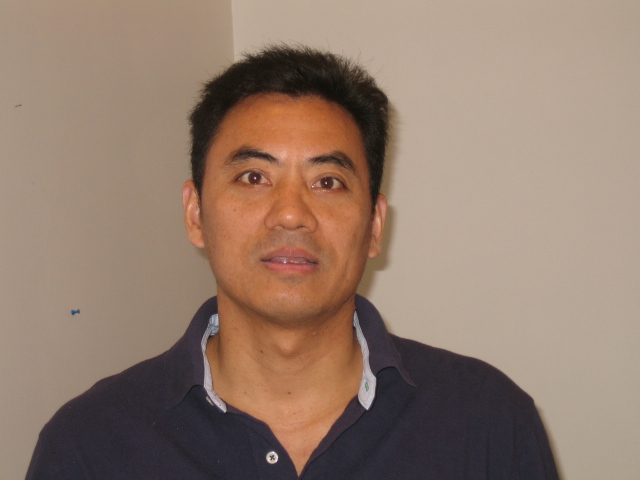
The 3rd International Conference on Big Data, Information and Intelligent Engineering (2025 BDIIE)
December 13th-14th, Wuhan, China
Keynote Speakers

Prof. Pascal Lorenz
University of Haute-Alsace, France.
Biography:
Pascal Lorenz (lorenz@ieee.org) received his M.Sc. (1990) and Ph.D. (1994) from the University of Nancy, France. Between 1990 and 1995 he was a research engineer at WorldFIP Europe and at Alcatel-Alsthom. He is a professor at the University of Haute-Alsace, France, since 1995. His research interests include QoS, wireless networks and high-speed networks. He is the author/co-author of 3 books, 3 patents and 200 international publications in refereed journals and conferences. He was Technical Editor of the IEEE Communications Magazine Editorial Board (2000-2006), IEEE Networks Magazine since 2015, IEEE Transactions on Vehicular Technology since 2017, Chair of IEEE ComSoc France (2014-2020), Financial chair of IEEE France (2017-2022), Chair of Vertical Issues in Communication Systems Technical Committee Cluster (2008-2009), Chair of the Communications Systems Integration and Modeling Technical Committee (2003-2009), Chair of the Communications Software Technical Committee (2008-2010) and Chair of the Technical Committee on Information Infrastructure and Networking (2016-2017), Chair of IEEE/ComSoc Satellite and Space Communications Technical (2022-2023), IEEE R8 Finance Committee (2022-2023), IEEE R8 Conference Coordination Committee (2023). He has served as Co-Program Chair of IEEE WCNC'2012 and ICC'2004, Executive Vice-Chair of ICC'2017, TPC Vice Chair of Globecom'2018, Panel sessions co-chair for Globecom'16, tutorial chair of VTC'2013 Spring and WCNC'2010, track chair of PIMRC'2012 and WCNC'2014, symposium Co-Chair at Globecom 2007-2011, Globecom'2019, ICC 2008-2010, ICC'2014 and '2016. He has served as Co-Guest Editor for special issues of IEEE Communications Magazine, Networks Magazine, Wireless Communications Magazine, Telecommunications Systems and LNCS. He is associate Editor for International Journal of Communication Systems (IJCS-Wiley), Journal on Security and Communication Networks (SCN-Wiley) and International Journal of Business Data Communications and Networking, Journal of Network and Computer Applications (JNCA-Elsevier). He is senior member of the IEEE, IARIA fellow and member of many international program committees. He has organized many conferences, chaired several technical sessions and gave tutorials at major international conferences. He was IEEE ComSoc Distinguished Lecturer Tour during 2013-2014.

Prof. Shuxiang Guo
Southern University of Science and Technolog, China.
Biography:
Shuxiang Guo received the Ph.D. degree in mechano-informatics and systems from Nagoya University, Nagoya, Japan, in 1995. He is currently a Chair Professor with the Department of Electronic and Electrical Engineering, Southern University of Science and Technology, Shenzhen, Guangdong, China, and also a Chair Professor with the Key Laboratory of Convergence System and Healthcare Technology Medical Engineering, The Ministry of Industry and Information Technology, Beijing Institute of Technology, China. His research interests include medical robot systems, microcatheter systems, and biomimetic underwater robots, on which subjects he has published more than 885 IEEE journal and conference papers, multiple Japan and China patents, books, and book chapters. His publications have more than 14194 Google Scholar citations, with h-index of 57 and i-10 index of 366, highest single-paper citation is 490. Prof. Guo is ranked among the top 0.5% scientists in Robotics & Biomedical Engineering, he is the World’s Top 2% Scientists 2023 (Stanford’s list of Top 2% Scientists).Prof. Guo is the recipient of the Chang Jiang Professorship Award by the Ministry of Education of China and the Oversea Talent Professorship Award of the Global Elite Program of China, in 2005 and 2012, respectively, as well as multiple Best Paper Awards. Based on his scientific achievements, he was elected to EAJ (Engineering Academy of Japan) Fellow and IEEE Fellow respectively. He is the founding chair for IEEE International Conference on Mechatronics and Automation. And he is the editor in chief for International Journal of Mechatronics and Automation.

Prof. Michael B.C. Khoo
Universiti Sains Malaysia, Malaysia.
Biography:
Michael B.C. Khoo is a Professor at the School of Mathematical Sciences, Universiti Sains Malaysia (USM). He received his PhD in Applied Statistics in 2001 from USM. His research interest is in Statistical Process Control and Statistical Quality Control. He has authored and co-authored about 300 papers in reputable peer-reviewed international journals, most of which are indexed in the SCI/SCIE database, including Q1 and Q2 journals indexed in the Web of Science (WoS) database. His research articles were published in Quality and Reliability Engineering International, International Journal of Industrial Engineering: Theory, Applications and Practice, International Journal of Production Research, Quality Engineering, International Journal of Production Economics, Communications in Statistics – Simulation and Computation, Communications in Statistics – Theory and Methods, Technometrics, Journal of Quality Technology, Quality Technology & Quantitative Management, IIE Transactions, European Journal of Operational Research, Computers & Industrial Engineering, Journal of Statistical Computation and Simulation, and Computational Statistics & Data Analysis. He has a total of 4863 citations and an h-index of 36 in the Scopus database. His h-index in the WoS database is 32. He was listed as the Top 2% Scientists in the World in their Respective Fields (Citation Impact in Single Year) by Stanford University (USA) for the year 2019, 2020 and 2022. He was ranked 3rd in Malaysia and 2599th in the world for Best Scientists in Mathematics for the Year 2023 by Research.com. 3 of his articles have been awarded the Top Cited Article 2021-2022 (John Wiley). He has reviewed 229 journal articles, where most of them are indexed in the WoS database. He is an editorial board member of Quality and Reliability Engineering International (John Wiley & Sons), European Journal of Industrial Engineering (Inderscience Publishers) and Measurement-Interdisciplinary Research and Perspectives (Taylor & Francis).

Prof. Lixin Wang
Columbus State University, USA
Biography:
Dr. Lixin Wang is currently a Professor and the Director of Graduate Programs at TSYS School of Computer Science in Columbus State University, Columbus, GA, USA. He holds a Ph.D. degree in Computer Science from Illinois Institute of Technology, Chicago IL. His research interests include Network Security, Intrusion Detection Systems, Wireless Networks, Algorithm Design and Analysis. He has been conducting top quality research in these areas and published more than 57 peer-reviewed high-quality research papers, most of which are published in leading journals or top-tier conferences in Computer Science. Since 2011, Dr. Wang has been awarded ten federal grants in the US (from NSA, NSF, US Army Reserve, US Department of Energy, or US Department of Education) as the PI or a Co-PI with the total awarded amount more than US$2.6 million. Dr. Wang is currently serving as an active editor/guest editor for seven academic journals in Computer Science, including guest editors of special issues. He served as a keynote speaker for the international conference ICWCNT 2016.